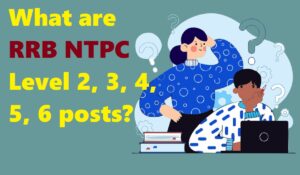Syllogism questions are a crucial part of the RRB NTPC exam. They test the candidate’s logical reasoning skills. These questions involve analyzing statements and drawing conclusions based on them. Candidates face two or more statements followed by conclusions that require to determine which conclusions logically follow. Regular practice and understanding common patterns can improve the candidate’s performance. We have provided 15 questions regarding Syllogism for RRB NTPC along with their solution PDF, candidates must refer to the same to know about their level of preparation and exam pattern.
Syllogism Questions for RRB NTPC
Q1. Read the given statements and conclusions carefully. Assuming that the information given in the statements is true, even if it appears to be at variance with commonly known facts, decide which of the given conclusions logically follow(s) from the statements.
Statements:
Some Books are Tables.
Some Tables are Pens.
Conclusions:
- Some Pens are Books.
- No Pen is a Book.
(a) Neither conclusion I nor II follows.
(b) Only conclusion II follows.
(c) Either conclusion I or II follows
(d) Only conclusion I follows.
Q2. Read the given statement and conclusion carefully. Assuming that the information given in the statement is true, even if it appears to be at variance with commonly known facts, decide which of the given conclusions logically follows(s) from the statements.
Statement:
All papers are pens
All pens are pencils
All pencils are bags
Conclusion:
- All pens are pencils
- All pens are papers
- All bags are papers
- All bags are pens
(a) Neither conclusion I nor II follows
(b) Only conclusion III follows
(c) Both conclusion II and IV follows.
(d) Only conclusion I follows
Q3. Read the given statements and conclusions carefully. Assuming that the information given in the statements is true, even if it appears to be at variance with commonly known facts, decide which of the given conclusions logically follow(s) from the statements.
Statements:
All Teachers are Researchers.
No Researchers is Unemployed.
Conclusions:
- Some Unemployed are Teachers.
- No Teacher is Unemployed.
III. Some Teachers are Unemployed.
(a) Only conclusion II follows.
(b) Only conclusions I follows.
(c) Only conclusion III follows.
(d) Both conclusions I and II follow.
Q4. Read the given statements and conclusions carefully. Assuming that the information given in the statements is true, even if it appears to be at variance with commonly known facts, decide which of the given conclusions logically follow(s) from the statements.
Statements:
All black are pink.
Some black are green.
Conclusions:
- No black is a pink.
- Some green are black.
(a) Both conclusions I and II follow
(b) Only conclusion II follows
(c) Only conclusion I follows
(d) Neither conclusion I nor II
Q5. Read the given statements and Conclusions carefully. Assuming that the information given in the statement is true, even if it appears to be at variance with commonly known facts, decide which of the given conclusions logically follow(s) from the statements
Statements:
- Some Mumbains are Americans
- No Americans are Delhiites
Conclusions:
- Some Delhiites are Americans
- All Americans are Mumbains.
(a) Only conclusion I follows
(b) Only conclusion II follows
(c) Neither conclusion I nor II follows
(d) Either conclusion I or II follows
Q6. Read the given statements and conclusions carefully. Assuming that the information given in the statements is true, even if it appears to be at variance with commonly known facts, decide which of the given conclusions logically follow(s) from the statements.
Statements:
All Students are Aspirants.
Some Students are Doctors.
Some Doctors are scientists.
Conclusions:
- No Doctors is a scientist.
- Some Scientists are Doctors.
(a) Only conclusion I follows.
(b) Both the conclusions follow.
(c) Only conclusion II follows.
(d) Either conclusion I or II follows.
Q7. Two statements are given followed by three conclusions numbered I, II and III. Assuming the statements to be true, even they seem to be at variance with commonly known facts decided which of the conclusions logically follow from statement.
Statements:
Some cats are Monkey
All Monkey are Deer.
Conclusions:
Some Deer are Cats.
All Deer are Cats
No Deer is Monkey.
(a) only conclusion I follow.
(b) only conclusion III follow.
(c) only conclusion I and III follow.
(d) only conclusion II and II follow
Q8. Read the given statements and conclusions carefully. Assuming that the information given in the statements is true, even if it appears to be at variance with commonly known facts, decide which of the given conclusions logically follow from the statements.
Statements:
- All Mangoes are White.
- All whites are Honest.
- No Honest is yellow.
Conclusions:
- No Yellow is a Mango.
- No Yellow is a white.
III. Some honest are Mango.
- Some Honest are yellow.
(a) Only conclusions I and III follow
(b) Only conclusions I, III and IV follow
(c) Only conclusions I, II and, III follow
(d) All conclusions I, II, III and IV follow
Q9. Read the given statements and conclusions carefully. Assuming that the information given in the statements is true, even if it appears to be at variance with commonly known facts, decide which of the given conclusions logically follow(s) from the statements.
Statements:
- All Shoes are Pants.
- All Pants are T-shirts.
- Some Pants are Fans.
Conclusions:
- All T-shirts are Shoes.
- Some T-shirts are Shoes.
III. All Shoes are Fans
(a) Only conclusion II follows
(b) Either conclusion I or III follows
(c) Both conclusions I and III follow
(d) Neither conclusion II nor III follows
Q10. Read the given statements and conclusions carefully. Assuming that the information given in the statements is true, even if it appears to be at variance with commonly known facts, decide which of the given conclusions logically follows from the statements.
Statements:
All stars are planets
Some planets are satellites
Some satellites are asteroids
Conclusion:
- Some asteroids are planets
- Some satellites are stars
(a) Only conclusion II follows
(b) Both the conclusions follow
(c) Neither conclusion I nor II follows
(d) Only conclusion I follows
Q11. Read the given statements and conclusions carefully. Assuming that the information given in the statements is true, even if it appears to be at variance with commonly known facts, decide which of the given conclusions logically follow(s) from the statements.
Statements:
All Electricians are Males.
Some Entrepreneurs are Males.
All Entrepreneurs are Students.
Conclusions:
- All Entrepreneurs are Males.
- Some Males are Students.
III. Some Electricians are Students.
- Some Electricians are entrepreneur.
(a) All conclusions I, II, III and IV follow
(b) Only conclusions I, II and IV follow
(c) Only conclusions II, III and IV follow
(d) Only conclusion II follows
Q12. Two statements are given, followed by three conclusions numbered I, II and III. Assuming the statements to be true, even if they seem to be at variance with commonly known facts, decide which of the conclusions logically follow(s) from the statements.
Statements:
All pens are pencils
Some makers are pen
Conclusions:
- All pencils are pens
- Some markers are pencils
- Some pencils are markers
(a) Only Conclusion II and III follow
(b) Only Conclusion I and III follow
(c) Only Conclusion I and II follow
(d) All the conclusion follow.
Q13. Two statements are given, followed by two conclusions numbered I and II. Assuming the statements to be true, even if they seem to be at variance with commonly known facts, decide which of the conclusions logically follow(s) from the statements.
Statements:
All mangoes are fruits.
Some sweets are mangoes.
Conclusions:
- All sweets are mangoes.
- Some fruits are sweets.
(a) Neither conclusion I nor II follows.
(b) Both conclusions I and II follow.
(c) Only conclusion II follows.
(d) Only conclusion I follows.
Q14. Read the given statements and conclusions carefully. Assuming that the information given in the statements is true, even if it appears to be at variance with commonly known facts, decide which of the given conclusion logically follow(s) from the statements.
Statements:
- Some Indians are Americans
- No American is French.
Conclusions:
- Some French are American
- All Americans are Indians.
(a) Only Conclusion I follows
(b) Only Conclusion II follows
(c) Neither conclusion I nor II follows
(d) Either conclusion I or II follows
Q15. Read the given statements and conclusions carefully assuming that the information given in the statements is true, even if it appears to be at variance with commonly known facts. Decide which of the given conclusions logically follow(s) from the statements.
Statements:
All pens are Duster.
All Dusters are tables.
Conclusion:
- Some tables are dusters.
- No pen is table.
- Some pen are not tables.
(a) Only conclusion III follows
(b) All conclusions I, II and III follow
(c) Both conclusions I and III follow
(d) Only conclusion I follows
Syllogism Questions for RRB NTPC Solution PDF
Syllogism Questions for RRB NTPC Solution PDF provides detailed explanations to understand syllogism concepts. This resource covers key strategies, rules, and shortcuts for solving syllogism problems efficiently. It includes solved examples and practice questions tailored to the RRB NTPC exam pattern, helping candidates improve accuracy and speed in logical reasoning sections. Candidates must go through the below-provided solution PDF for the RRB NTPC Syllogism Questions.




 What are RRB NTPC Level 2, 3, 4, 5, 6 po...
What are RRB NTPC Level 2, 3, 4, 5, 6 po...
 RRB NTPC Eligibility Criteria 2025, Chec...
RRB NTPC Eligibility Criteria 2025, Chec...
 RRB NTPC Previous Year Question Papers, ...
RRB NTPC Previous Year Question Papers, ...









